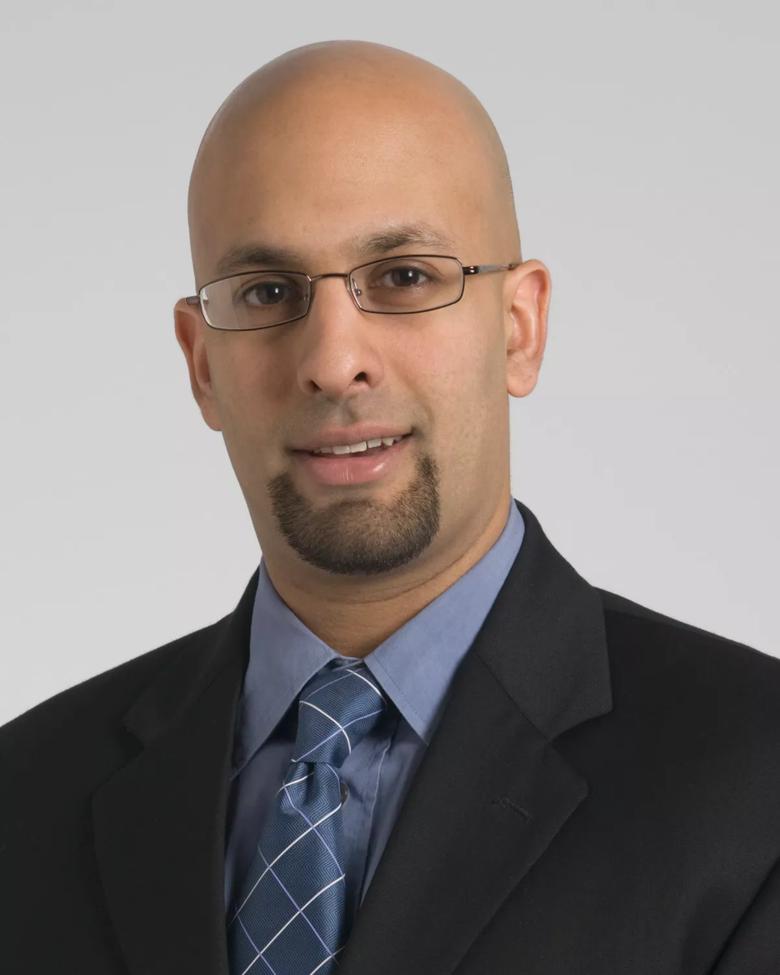Findings to be published in Cell Stem Cell
Cleveland Clinic News Service | 216.444.0141
We’re available to shoot custom interviews & b-roll for media outlets upon request.
CCNS health and medical content is consumer-friendly, professional broadcast quality (available in HD), and available to media outlets each day.

A new study by Cleveland Clinic researchers has uncovered some of the mystery behind what enables glioblastoma – one of the most deadly and recurring brain cancers – to resist most cancer treatments, including chemotherapy, radiation and immunotherapy.
The study, to be published in the April edition of Cell Stem Cell, appears in the online edition of the medical journal at http://www.cell.com/cell-stem-cell/fulltext/S1934-5909(16)30457-X.
A team led by Justin Lathia, Ph.D., a researcher in Cleveland Clinic’s Lerner Research Institute, found that glioblastoma stem cells – the most aggressive of brain tumor cells – have lost a key receptor that would allow them to sense that they are in a damaged microenvironment, in which case they would undergo programmed cell death or bind to immune cells and be killed by the body’s immune system.

More specifically, researchers found that glioblastoma stem cells express a lower level of the toll-like immune receptor 4 (TLR4), which is part of the innate immune system. Since an abundance of TLR4 inhibits cancer stem cells from multiplying, low levels of the receptor allow the deadly cells to persist and multiply, even in a microenvironment hostile to their survival.
“It’s like cancer stem cells have their head phones on. They have lost the ability to sense the environment around them,” said Lathia, a stem cell biologist in the Department of Cellular and Molecular Medicine at the Lerner Research Institute and a faculty member at Cleveland Clinic Lerner College of Medicine
Tumors usually emit hostile inflammatory signals that are sensed by TLRs, which prevent cells from dividing and alert the immune system to mount a response.
For reasons not understood until now, glioblastoma stem cells do not spark this same damage response. Their ability to survive and persist in a damaged microenvironment make this form of brain cancer one of the deadliest.
The findings offer potential pathways for new therapies. If researchers know how glioblastoma stem cells evade the damage response, Lathia said, they can devise strategies to reactivate that response so that tumor cells sense damage and activate cell death programs.
“We now know a lot more now about the biology of the tumor,” Lathia said, “and that provides additional therapies to be considered.”
One of the next steps is to screen various drugs to determine which ones make the stem cells more sensitive to their environment, thus preventing the cells from continuing to divide, he said.
Lathia became intrigued by the role of toll-like receptors in stem cells during brain development while working on his doctorate in stem cell biology at the National Institutes of Health-Cambridge Graduate Partnership Program. He continued his investigation upon starting his own laboratory at the Lerner Research Institute in 2012.
He was assisted in this study by Alvaro Alvarado, Ph.D., a recent graduate of the Cleveland Clinic Molecular Medicine Ph.D. program, as well as by Michael A. Vogelbaum, M.D., Ph.D., professor of Neurosurgery and associate director of the Brain Tumor Oncology Center at Cleveland Clinic.
“Clinical trials are currently exploring whether the gains seen with immunotherapy in other cancers can be achieved in brain tumors,” said Dr. Vogelbaum. “These findings will help us to better understand, and ultimately target, mechanisms by which these tumors resist current and novel treatments.”
The research team also included Cleveland Clinic researcher Michelle Longworth, Ph.D., an expert in gene regulation who assisted the team in determining the molecular mechanism through which TLR4 reduced the stem cell response.
The project received funding from The Sontag Foundation, Blast Glioblastoma and Cleveland Clinic’s VeloSano Bike to Cure program.
Cleveland Clinic is a nonprofit multispecialty academic medical center that integrates clinical and hospital care with research and education. Located in Cleveland, Ohio, it was founded in 1921 by four renowned physicians with a vision of providing outstanding patient care based upon the principles of cooperation, compassion and innovation. Cleveland Clinic has pioneered many medical breakthroughs, including coronary artery bypass surgery and the first face transplant in the United States. Cleveland Clinic is consistently recognized in the U.S. and throughout the world for its expertise and care. Among Cleveland Clinic’s 82,600 employees worldwide are more than 5,786 salaried physicians and researchers, and 20,700 registered nurses and advanced practice providers, representing 140 medical specialties and subspecialties. Cleveland Clinic is a 6,728-bed health system that includes a 173-acre main campus near downtown Cleveland, 23 hospitals, 280 outpatient facilities, including locations in northeast Ohio; Florida; Las Vegas, Nevada; Toronto, Canada; Abu Dhabi, UAE; and London, England. In 2024, there were 15.7 million outpatient encounters, 333,000 hospital admissions and observations, and 320,000 surgeries and procedures throughout Cleveland Clinic’s health system. Patients came for treatment from every state and 112 countries. Visit us at clevelandclinic.org. Follow us at x.com/CleClinicNews. News and resources are available at newsroom.clevelandclinic.org.
Editor’s Note: Cleveland Clinic News Service is available to provide broadcast-quality interviews and B-roll upon request.